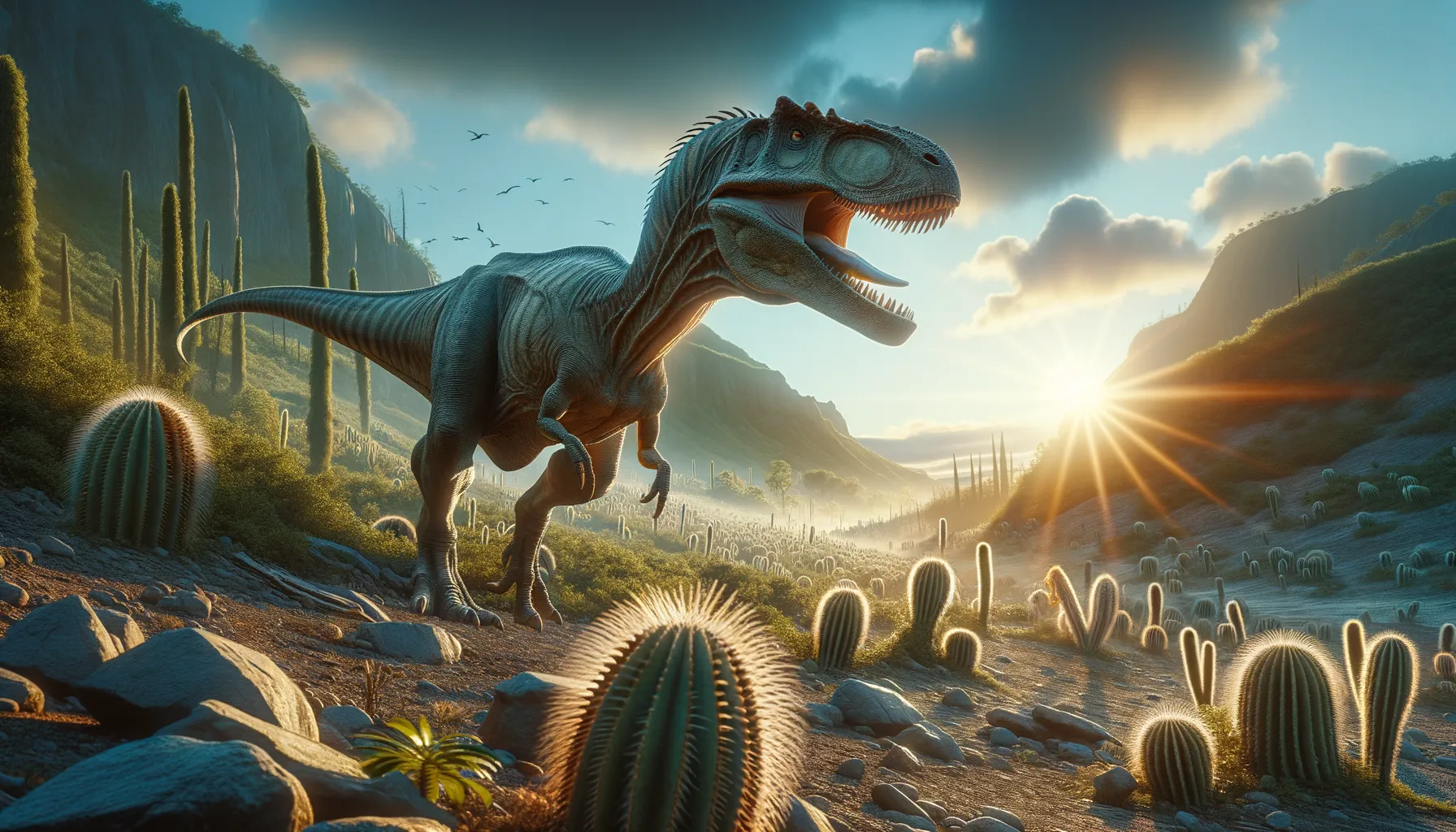
Rioarribasaurus
Swift predator of ancient Triassic lands.
Period
Triassic
Length
Roughly 6 to 7 meters long.
Height
Around 1.5 to 2 meters tall.
Weight
Approximately 100-150 kilograms.
Rioarribasaurus was a theropod dinosaur from the late Triassic period. It is considered an early relative of the more famous carnivorous dinosaurs. Known from partial skeletons, this dinosaur offers insights into the evolution of theropods. With its bipedal stance and swift movement, it was likely a formidable predator in its ecosystem. The discovery of Rioarribasaurus has helped paleontologists understand the diversity and adaptation of early theropods during the Triassic.
Diet
Rioarribasaurus was a carnivore, primarily hunting smaller vertebrates and possibly scavenging. Its sharp teeth suggest a diet of flesh, and it likely supplemented its meals with opportunistic catches.
Hunting
This dinosaur was likely a solitary hunter, relying on ambush tactics to capture prey. Its relatively slender build suggests it relied on speed and stealth rather than brute force.
Environmental challenges
Rioarribasaurus lived in a time of significant climatic shifts, with the Triassic period experiencing numerous environmental changes. It had to adapt to varying temperatures and potentially changing prey availability. Additionally, the competition with other theropods might have been a constant challenge in its ecological niche.
Speed
Moderate runner, similar to modern-day large birds.
Lifespan
Estimated to live up to 20-30 years.
First discovery
Discovered in Rio Arriba County, New Mexico, in 1995.
Fun Facts
- Rioarribasaurus was named after Rio Arriba County in New Mexico, where its fossils were discovered.
- It lived during the Late Triassic period, making it one of the earlier dinosaurs.
- This dinosaur was similar in appearance to the more famous Coelophysis, suggesting they may have been close relatives.
- Rioarribasaurus was a carnivorous dinosaur, likely feeding on small animals and possibly even smaller dinosaurs.
- The dinosaur's remains were found in Ghost Ranch, an area known for its rich fossil beds.
- Rioarribasaurus was a two-legged dinosaur, which means it moved around on its hind legs.
- Although it wasn't very big by dinosaur standards, Rioarribasaurus was likely agile and quick, making it an effective predator.
Growth and Development
Rioarribasaurus, like other theropods, likely grew rapidly in its early years to avoid predation. It is possible these dinosaurs reached near full size within a few years. The juveniles probably had distinct growth patterns compared to adults, enabling quick development in their critical early stages.
Habitat
Its habitat would have been a mix of open plains and forested areas, providing ample cover for hunting. The environment was likely semi-arid, with seasonal changes influencing its hunting and survival strategies. Water sources like rivers or lakes would have been crucial for its daily needs.
Interaction with other species
As a predator, Rioarribasaurus would have interacted intensely with prey species within its ecosystem, affecting their population dynamics. It possibly competed with other predators, establishing territory or hunting rights. On occasion, scavenging from other predators' kills would also have been part of its survival strategy.
Natural lifespan
In optimal conditions, it lived up to 20-30 years.
Reproduction
Rioarribasaurus probably reproduced via laying eggs in nests, much like modern birds and reptiles. Parental care, if any, would have been limited, with the young needing to fend for themselves early. Clutches might have been laid in concealed locations to protect from predators.
Social behaviour
Little is known about its social behavior, but Rioarribasaurus might have been largely solitary, except during breeding seasons. It's possible that they occasionally formed loose groups for hunting or protection against larger predators.
Fossil locations
Fossils of Rioarribasaurus have primarily been found in the Chinle Formation of New Mexico. These findings are crucial, providing insight into theropod distribution in North America during the Triassic. The site has yielded partial skeletons, allowing for reconstruction of its biology and behavior.
